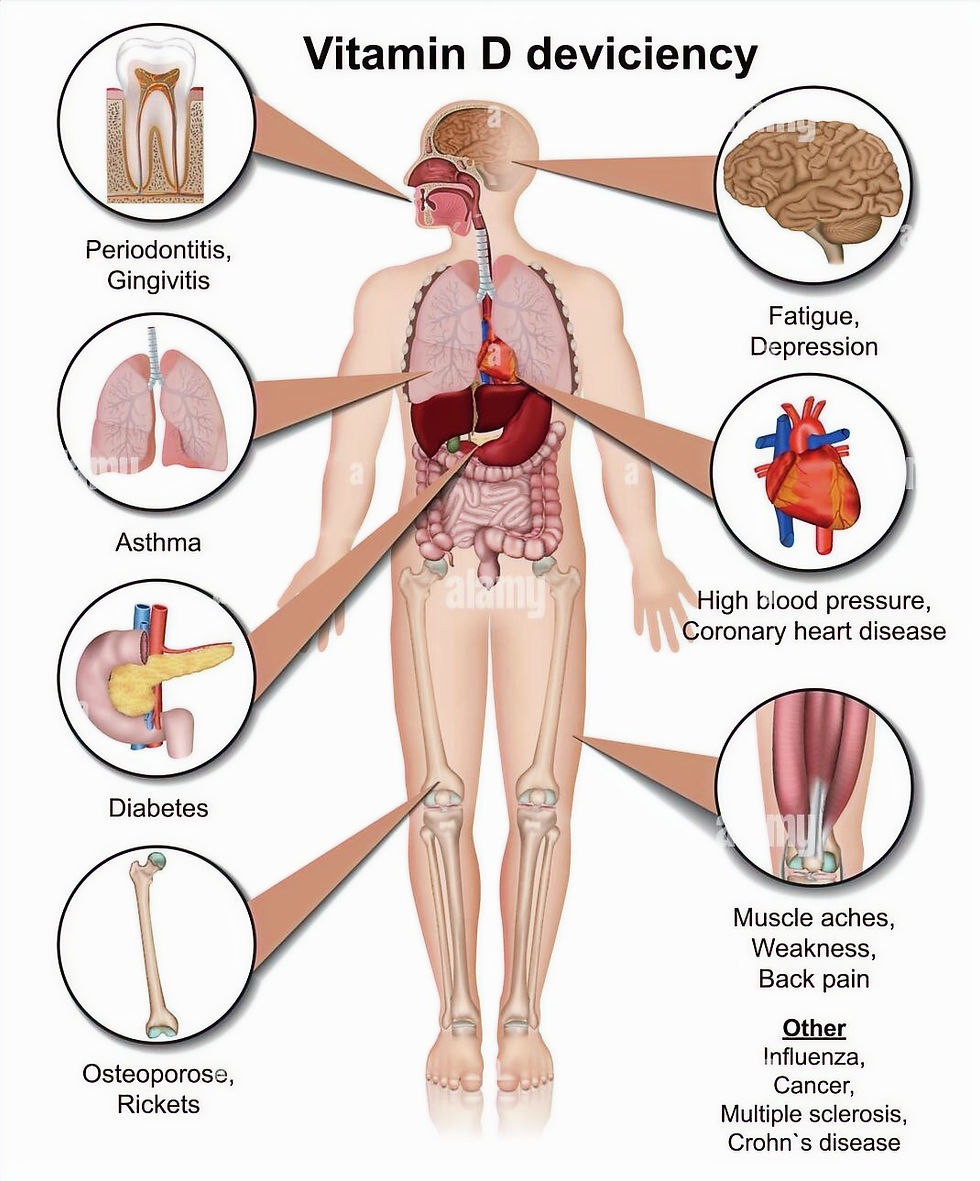Vitamin D Deficiency
- Victor Nwoko
- Feb 3, 2024
- 2 min read
If you avoid the sun, use sunscreen, have milk allergies, or follow a strict vegan diet, you might be at risk for vitamin D deficiency. Vitamin D, known as the sunshine vitamin, is made by the body when the skin is exposed to sunlight. It is also found naturally in certain foods, such as fish, fish liver oils, and egg yolks, as well as in fortified dairy and grain products.
Vitamin D is crucial for strong bones because it helps the body utilize calcium from the diet. Traditionally, vitamin D deficiency has been linked to rickets, a disease where bone tissue doesn't mineralize properly, leading to soft bones and skeletal deformities. However, research is increasingly highlighting the importance of vitamin D in preventing various health problems.
Symptoms and Health Risks of Vitamin D Deficiency: Bone pain and muscle weakness can indicate a vitamin D deficiency. Yet, many people may experience subtle symptoms, and even without obvious signs, insufficient vitamin D levels can pose health risks. Low blood levels of the vitamin have been associated with:
Increased risk of death from cardiovascular disease
Cognitive impairment in older adults
Severe asthma in children
Cancer
Research suggests that vitamin D could play a role in preventing and treating various conditions, including type 1 and type 2 diabetes, hypertension, glucose intolerance, and multiple sclerosis.
Causes of Vitamin D Deficiency: Vitamin D deficiency can occur due to several reasons:
Inadequate consumption of the recommended vitamin levels over time, especially for strict vegans.
Limited exposure to sunlight, which can happen if you are homebound, live in northern latitudes, wear long robes or head coverings for religious reasons, or have an occupation that limits sun exposure. Vitamin D deficiency may be more common during winter when there is less sunlight available.
Dark skin, as melanin reduces the skin's ability to make vitamin D.
Aging kidneys become less efficient at converting vitamin D to its active form.
Digestive tract issues that affect vitamin D absorption.
Obesity, as fat cells, can extract vitamin D from the blood, reducing its release into circulation.
Tests for Vitamin D Deficiency: The 25-hydroxy vitamin D blood test is the most accurate way to measure vitamin D levels. A level of 20 nanograms/milliliter to 50 ng/mL is considered adequate, while a level less than 12 ng/mL indicates deficiency.
Treatment for Vitamin D Deficiency: Treatment involves increasing vitamin D through diet and supplements. Although optimal vitamin D levels may vary with age and health conditions, a concentration of less than 20 nanograms per milliliter is generally considered inadequate. The Institute of Medicine recommends 600 international units (IU) for everyone ages 1-70 and 800 IU for adults older than 70 for bone health. The safe upper limit is 4,000 IU, but doctors may prescribe higher doses to correct deficiencies.
If you have risk factors for vitamin D deficiency, consult your doctor/pharmacist about taking a vitamin D supplement.
















Comments